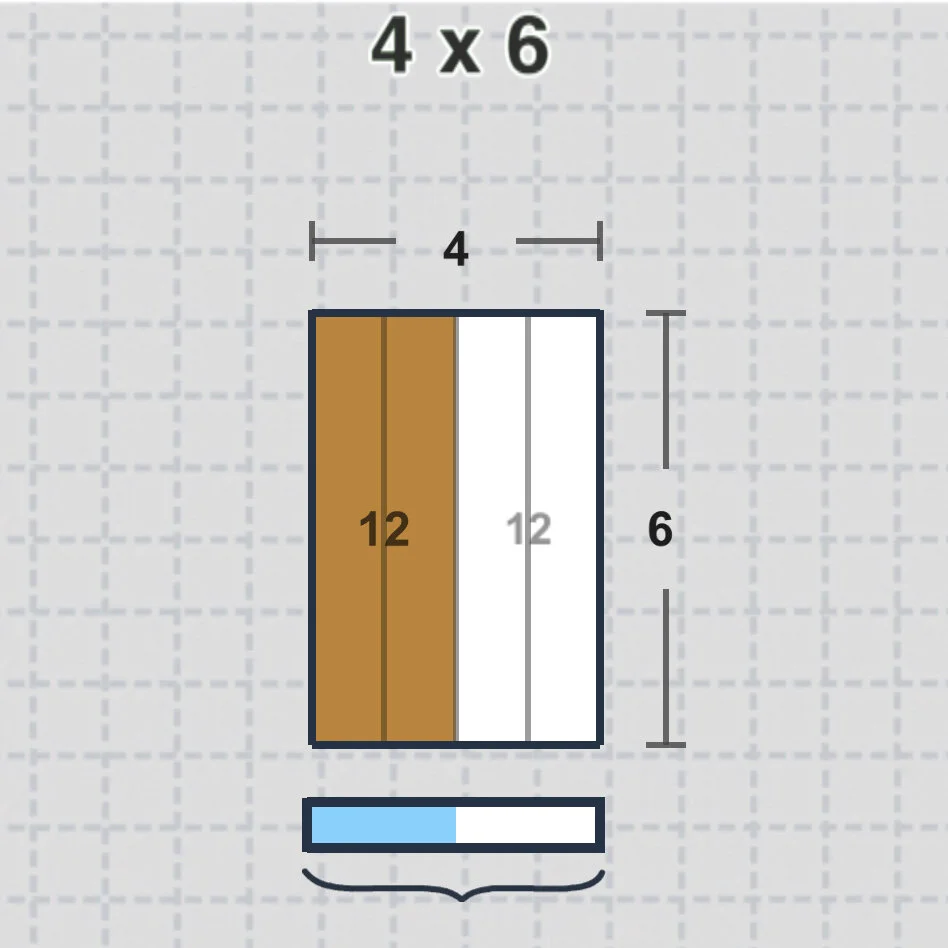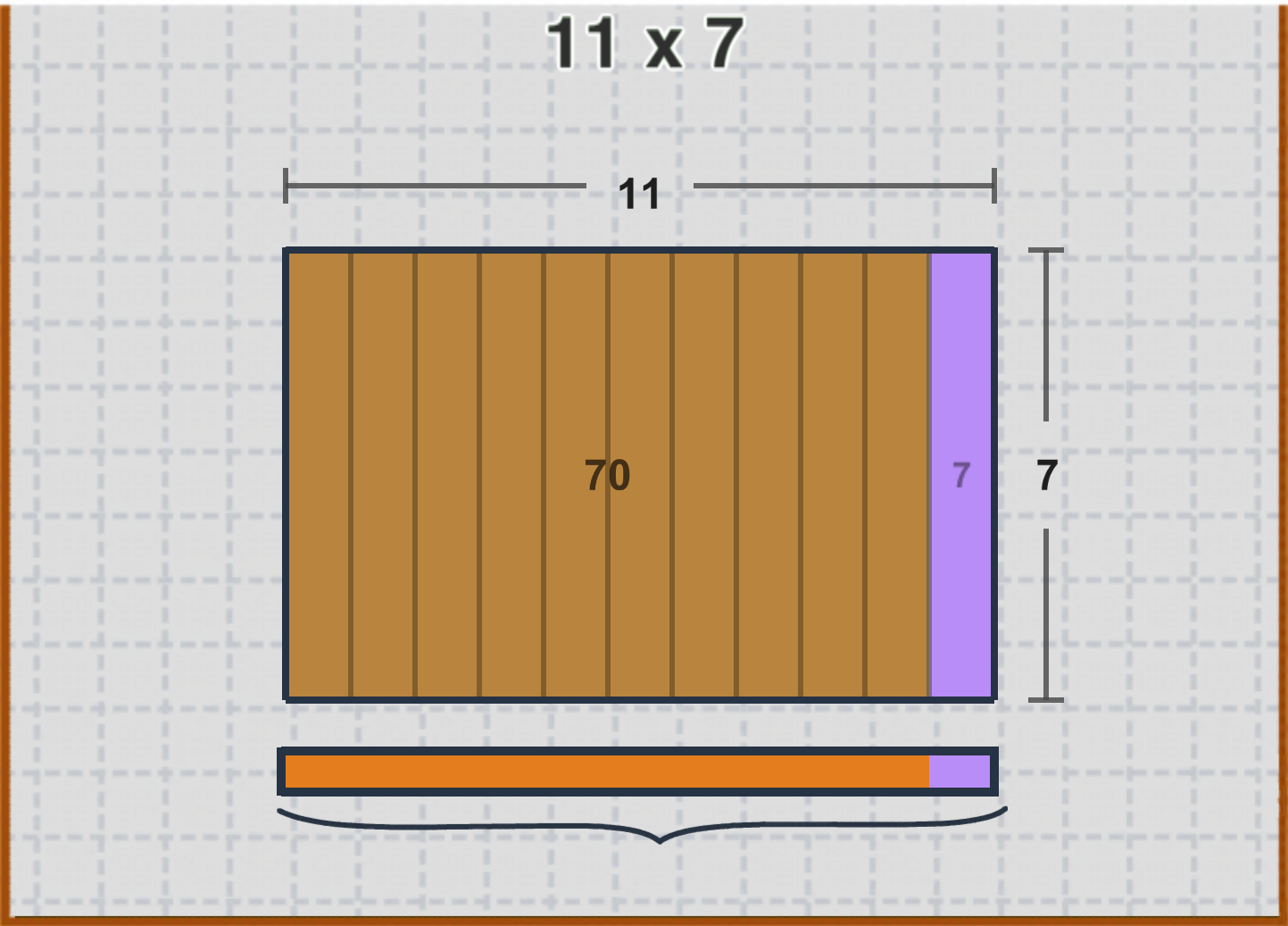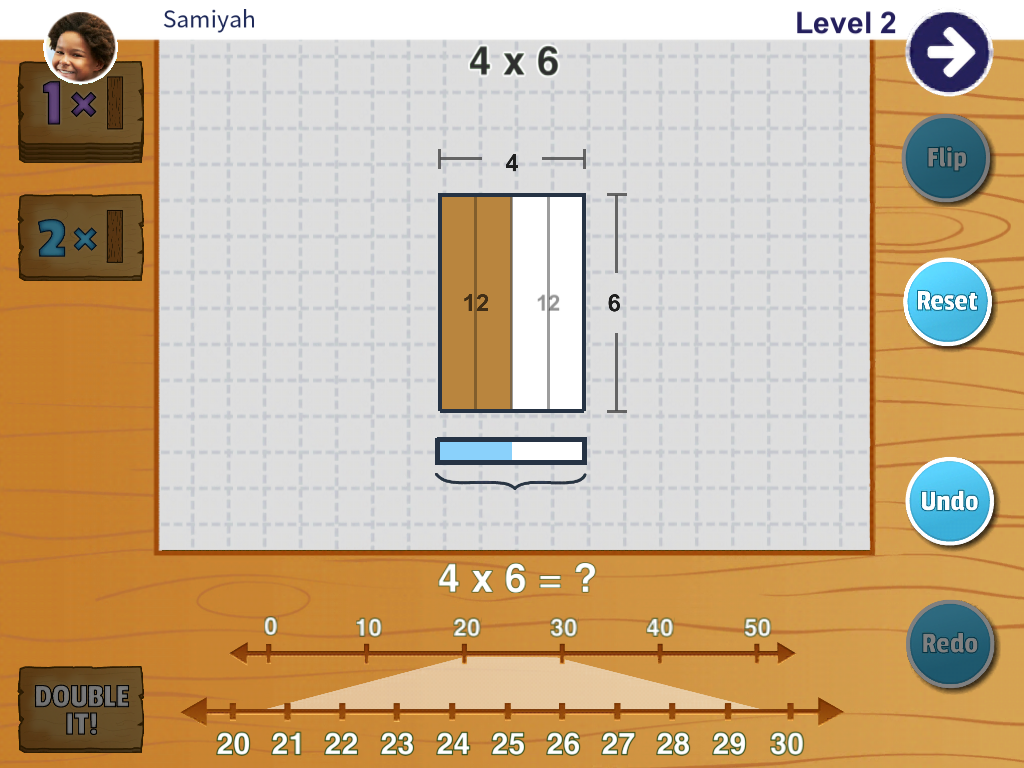One of the trickiest parts of teaching multiplication is developing an understanding of the distributive property. Because of this, we made the distributive property the focus of Mt. Multiplis, our multiplication app.
The Common Core State Standards expect third graders to use the distributive property when multiplying (which you and I learned in middle school): “Knowing that 8 × 5 = 40 and 8 × 2 = 16, one can find 8 × 7 as 8 × (5 + 2) = (8 × 5) + (8 × 2) = 40 + 16 = 56” (CCSM.3.OA.B.5). That’s one complicated equation, and it’s hard to imagine that most 9-year-olds, who are just learning how to multiply, are able to make sense of that notation. So, we set out to see if we could not only make this complex content more approachable, but also fun.
At its core, the distributive property is about groups. It connects multiplication and addition by letting you break up a multiplication problem into smaller chunks. For example, when solving 7 x 8, you can think of it as 7 groups of 8. But, how does that help you multiply? Let’s say you forgot what 7 x 8 is, but you know 5 x 8 is 40. You can then think of 7 x 8 as 5 groups of 8 plus 2 more groups of 8, that’s 40 + 16.
In Mt. Multiplis students explore this property by using groups of wooden planks to build bridges. To fill a 7 by 8 area, students drag over 5 planks of 8 and then drag over another 2 planks of 8.
The best part of playtesting has been watching kids discover the applications of the distributive property on their own. While playing Level 5, which features a lot of 11 x __ problems, one fourth grader literally said, “Aha!” as he realized for the first time, why the 11s rule works. He explained to me that the 11s facts are easy (i.e. 5 x 11 = 55, etc), but that he didn’t understand why the shortcut worked until he played Mt. Multiplis. Solving 11 x 7, he dragged over 10 groups of 7 to make 70 and then dragged over 1 more 7.
Another third grader was working through several 4 x __ problems. She would consistently drag out 2 planks and then use the Double-It card to make another set of 2 planks. She first saw the problem 4 x 6, dragged out 2 six-planks to make 12 then used the Double-It card to make another group of 12. She did not fully trust that the answer was actually going to be 24, but she entered it in anyway and was surprised when it was correct.
Next, she solved 4 x 3 and then 4 x 8 in the same way. After solving 4 x 8, thinking about 16 doubled, she asked me, “Does that always work…with the 4 times problems…you can just double the 2 times?” Yep, it always works. And that’s some pretty sophisticated algebraic thinking. Another way to phrase her question: Does 4y = 2y + 2y? Yes, because of the distributive property.
Learn more about our multiplication and division games.
To download Mt. Multiplis, go to: bit.ly/TeachleyApps
For a free extension activity to use with your students, click here.




